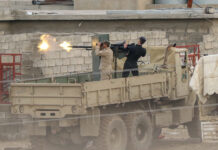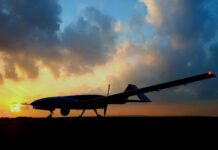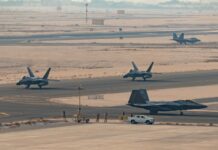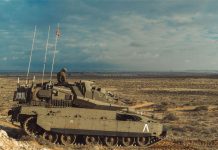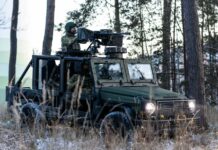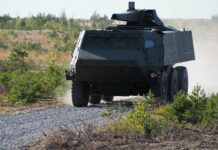In addition to ongoing counterinsurgency operations in Africa and the Middle East, recent trends point to the possibility for a greater conflict in the future between equal rivals in view of worsening relations between NATO, Russia and China.
In the event of such a conflict, the use of armoured vehicles will be key since it is these mobile fighting platforms, which provide the all-important protection and increased mobility for troops on the ground. Nowadays, the global market in armoured vehicles is characterised by a constant stream of contracts and the implementation of new programmes.. Fortune Business Insights estimates that the armoured vehicle market will reach as much as US$26.12Bn by 2026.
Overview
The market for armoured vehicles in Europe is highly competitive and involves international leaders in defence contracts and also countries with smaller defence budgets. By 2029, the European continent will be placed in the top three in this market in terms of the size and value of its armoured vehicle market. In this field, the main players in Europe include Textron Inc., Otokar, a KOC Group Company, NORINCO, Iveco Defence Vehicles, Denel SOC Ltd, Ukroboronprom, Rheinmetall, Oshkosh Corporation, Krauss-Maffei Wegmann GmbH & Co. KG, General Dynamics Corporation, and BAE Systems.

Russia’s invasion of the Crimean Peninsula in 2014 highlighted the need for Eastern European countries to replace Soviet-era technology with western equipment. The increase in military expenditure has caused a surge in the development and purchase of armoured vehicles, not least since Eastern European countries had inherited huge fleets of armoured vehicles from the Soviet period, which naturally hindered the development of new projects.
The European Recapitalization Incentive Programme, a US$190M fund that replaces Soviet-era weapons in the armed forces of Albania, Bosnia and Herzegovina, Croatia, Greece, Northern Macedonia and Slovakia, will help replace those platforms dating from the Cold War period. However, the programme is peculiar in that American equipment will also be delivered and this reduces the capability of European manufacturers to supply these countries. Many European military structures have chosen the eight-wheel drive vehicles, but at the same time, they are not rejecting tracked platforms, which can also see an increase in numbers over the coming decade.
To understand the innovative development trends in the armoured vehicle market, we should pay attention to the American programme, Optionally Manned Fighting Vehicle (OMFV), which is developing a new armoured combat vehicle to replace the M2 BRADLEY.
The main priority of this vehicle will be its invulnerability when pitched against other infantry fighting vehicles such as the Russian BMP-3, which is equipped with antitank missiles and medium weapons.
The new vehicle has to be sufficiently manoeuvrable when operating in the enemy’s impact zone, and also able to transport infantry troops to their destination. In this situation, air transportability becomes secondary as armoured units are rarely deployed by air. Such requirements for the armoured vehicle means it is even more focused on combating the Russian threat in Eastern Europe. It also means that a sufficient number should be available in the countries where the threat is most expected, as opposed to being deployed only after the outbreak of a confrontation.
Bulgaria

In view of Russia’s increasingly active attempts to strengthen its military presence in the Black Sea region, Romania and Bulgaria have accelerated their programmes to modernize their armed forces and replace Soviet-era machinery with western equipment, as Defense News reports.
Bulgaria aims to increase its annual defence spending to 2% of its GDP by 2024. The Bulgarian Ministry of Defence (MoD) plans to purchase 150 armoured vehicles for the country’s land forces with several candidates for the US$851M contract in the running, including Finland’s Patria, Swiss-based General Dynamics Land Systems – MOWAG, Germany’s ARTEC (Krauss-Maffei Wegmann and Rheinmetall), and France’s Nexter Group.
In 2019, Bulgaria was offered the opportunity to purchase 150 armoured vehicles from Finland’s Patria and US company General Dynamics within the tender. According to Patria, the company offered to supply 150 8×8 multi-role military vehicles, the AMV XP. This included 90 combat and 60 support vehicles.
In early 2019, the Bulgarian MoD postponed the tender of 150 armoured vehicles to a later date. According to the Jane’s Defence Weekly, the reason for delay was that the MoD failed to prepare the tactical and technical requirements for the equipment. The relevant requests for proposals were originally planned to be published in late 2018, however, everything rested on the required paperwork for the tender. In fact, no decision had been made concerning the calibre of the ammunition; the 30x173mm Soviet-era calibre is made in Bulgaria and will cost less than the 30x165mm cartridges to be imported. Another unresolved problem concerns the question of whether to order the equipment with antitank systems in place or to purchase these at a later date. For the armoured vehicles in a support role, Sofia is supposed to choose the specific platform it wants – the 8×8, or the 6×6 version, which would reduce costs. The delivery of the support variants is expected to be carried out by 2026, and the 90 armoured combat vehicles, by 2024.

Romania
In 2016, the German defence concern Rheinmetall was said to have signed an agreement with the Romanian Uzina Automecanica Moreni on the establishment of a joint venture to produce 8×8 armoured vehicles in Romania. According to these plans, the production of armoured vehicles will replace the Romanian TAB combat vehicles – a version of the Soviet BTR-70. About 1,500 of these vehicles have to be replaced.
In 2017, Romania placed an order for PIRANHA eight-wheeled armoured vehicles from General Dynamics European Land Systems within the Romanian Army’s land vehicle modernisation programme. In 2018, as part of the Romanian Army’s modernisation of its outdated fleet of wheeled armoured vehicles, General Dynamics European Land Systems signed a contract to supply more than 200 PIRANHA 5 wheeled armoured vehicles in six different configurations. In 2019, General Dynamics European Land Systems launched the production of PIRANHA 8×8 armoured vehicles (fifth generation) in Romania, at its strategic partner’s factory Uzina Mecanică București. This version of the armoured vehicle is characterised by a higher level of protection, its improved transmission with the possibility to increase the load capacity, and advanced mobility.
This is all part of Romania’s accelerated programme to strengthen its military efficiency and implement its NATO commitments. Thus, the country’s land forces have thoroughly overhauled their equipment in recent years, and participate in peacekeeping missions with other NATO countries on a regular basis.
Also, in the framework of German-Romanian defence cooperation, in 2018, they announced the creation of a joint venture, Romanian Military Vehicle Systems, by Rheinmetall and the Romanian state defence contractor Romarm. The result of this cooperation is the construction of a new armoured vehicle, the AGILIS 8×8, produced according to German technology, with 87% of the components manufactured in Romania. The first vehicle is due to be delivered to the Romanian MoD in 2020.
Hungary
Sooner or later, Hungary, as a NATO member, will also be faced with the need to update its current armoured vehicles dating from the Soviet period. The country possesses a large amount of BTR-80 and BTR-80A AFVs and these vehicles have been upgraded and subsequently received the indices BTR-80M and BTR-80AM. The main emphasis will be placed on armoured vehicles with a high level of crew protection and mine resistance.

In 2019, Hungary was expected to become the sixth country to purchase the EJDER YALÇIN 4×4 produced by Turkey’s Nurol Makina Sanayi. The EJDER YALÇIN 4×4 armoured combat vehicle is characterised by a high level of protection and mobility, with a high load capacity. Accordingly, the working load can be integrated on this platform and is able to be used in various configurations – e.g., as a border surveillance and security vehicle, as an air defence vehicle, and as a reconnaissance vehicle.
Poland
In 2019, Poland signed a military cooperation agreement with the US when the Minister of National Defence, Mariusz Blaszczak, approved and signed a 15-year plan for the technical modernisation of the armed forces in the period 2020-2035. During this period, Poland plans to carry out a large-scale rearmament of its armed forces with an overall cost of about US$133Bn. The plan includes the rearmament of the Polish Air Force, the creation of a multilevel and integrated reconnaissance system according to the new programme Obserwator, the purchase of new submarines under the Orka programme, and the further strengthening of artillery assets. There are also four key programmes in the field of modernizing tanks and armoured vehicle fleets: the modernisation of LEOPARD 2A4 tanks to the LEOPARD 2PL standard; the purchase of ROSOMAK wheeled armoured personnel carriers; the acquisition of a new generation of tanks codenamed WILK; and putting the BORSUK infantry fighting vehicles into operation. The purchase of these wheeled armoured personnel carriers under the ROSOMAK programme will proceed with the basic transport version, and in a specialized version with inhabited and uninhabited turrets. The new track-type infantry fighting vehicles within the BORSUK programme to replace the BWP-1 platform will cost about 20Bn Zlotys.
The new BMP is produced by the ROSOMAK consortium, Huta Stalowa Wola. The vehicle will be equipped with an uninhabited turret with a 30-mm American Mk44 BUSHMASTER II automatic cannon and an Israeli-made SPIKE anti-tank guided missile launcher. As the Defence Blog reported in May 2020, the Minister of National Defence of Poland, Mariusz Błaszczak, announced that the Polish Army was ready to acquire the first group of 60 ROSOMAK-S APCs, modified to carry SPIKE LR Dual anti-tank guided missiles. The agreement is planned to be concluded in the third quarter of 2020. This purchase will be helpful in the process of strengthening the so-called “Eastern Wall” as these vehicles will mainly be deployed to units located in the east of the country. The Israeli antitank guided missile SPIKE-LR has the capability to engage armoured vehicles at a distance of up to 4,000m.
The Czech Republic
The Ministry of Defence of the Czech Republic has submitted proposals to replace its outdated Cold War era BVP-2 with new infantry fighting vehicles. In the bid for the US$2Bn contract, 210 units are expected to be supplied, and will be chosen from the ASCOD, offered by General Dynamics European Land Systems; BAE Systems’ CV90; Rheinmetall’s LYNX; and the PUMA, produced by Germany’s Krauss-Maffei Wegmann and Rheinmetall.
Ukraine
With the outbreak of armed hostilities in the east of Ukraine in 2014, the Ukrainian Army was forced to use its Soviet-era military equipment which failed to meet the needs of fighting in the modern era. As the conflict has continued unabated, armoured vehicles of different classes were actively developed by both state and private enterprises. Also, the process of restoration, repair and modernisation of armoured vehicles of the Soviet period continues. For example, the repaired BTR-70 and BTR-80 have been dispatched to the armed forces in large numbers.

Early 2020 was marked by an increased number of transfers of armoured vehicles to the armed forces with open sources reporting that from January to May, about 300 vehicles were transferred, including armoured personnel carriers, infantry fighting vehicles, light and special armoured vehicles, and tanks. The BMP-1 units and the new BTR-4E are also being supplied to the armed forces. In April 2020, Ukrspetsexport, as part of the state concern, Ukroboronprom, launched the process of supplying the Ministry of Defence with 37 BMP-1 units.
The modernisation of the BRDM-2 to the BRDM-2L1 is still in progress. In April 2020,eight units were transferred by the Nikolaev Armoured Factory, as part of the Ukroboronprom to the Ministry of Defence. During the renewal process, the characteristics of the basic BRDM-2 vehicle were improved, taking into account experience from combat operations, with the installation of the latest navigation and communication equipment, a television night vision system, changes to the crew position, an upgrade in the vehicle’s armour, t and the reduction in the time for the crew’s disembarkation.
Different types of armoured vehicles in Ukraine are produced by the private company NGO Practika. The company is engaged in the modernisation of the Soviet-era infantry fighting vehicles BMP-1 and BMP-2, with the installation of a new engine, a combat module, better mine protection, and improved communications and surveillance equipment. The modernisation of the BTR-60 includes the following characteristics: the engine is situated at the front side of the vehicle and troops being transported are seated in the back; there is also enhanced ballistic protection, mine proof and anti-mine seats, a modern diesel engine, and the ability to install a combat module.
The KOZAK-2 multipurpose armoured vehicle, based on the Iveco chassis, has been serially produced since 2015, with more than 100 units in service with the Armed Forces of Ukraine. The vehicle has an increased level of protection, from small arms fire (7.62 mm calibre) and from mine fragments.
The OTAMAN 6×6 and 8×8 armoured combat vehicle is produced by the Ukrainian manufacturer NGO Practika and was first presented in 2016 at the Defexpo exhibition in India. Based on the BTR-60 chassis, it can be used as an armoured personnel carrier, infantry fighting vehicle or armoured ambulance role. The OTAMAN has a crew of three and is capable of transporting up to ten personnel. A new OTAMAN-3 with the 6×6 wheel arrangement was presented at the Arms and Security exhibition in 2019 in Kyiv and is a collaborative development between NGO Practika and League of Defence Companies of Ukraine and Ukroboronprom. The peculiarity of this version is its compact size and its reinforced armour protection according to the STANAG 4569 standard, (level 2), with the possibility to attach additional ceramic armour. It also has a special suspension system with a greater load carrying capacity, and a compartment for the disembarkation of personnel from the rear of the vehicle. The vehicle was specially designed for the needs of the Armed Forces of Ukraine and marines and was produced according to the requirements of the Ukrainian military forces based on combat experience. In 2020 in Ukraine, the testing of this new armoured personnel carrier took place, after which it was introduced into the Ukrainian army’s arsenal.
The Kraz SPARTAN armoured car, designed in collaboration with the Canadian Streit Group company, is also supplied to the Armed Forces of Ukraine. Basing on the Ford-F550 chassis, the vehicle was designed to transport personnel in high-risk situations. One well-known case occurred recently in June 2020, when a Kraz SPARTAN car detonated a mine while travelling in a convoy on operations in the Donbas; this resulted in injuries to the personnel on board, but with no fatalities, as the cab was able to withstand the blast.
The BTR-4 is produced in Ukraine by the Kharkiv Morozov Machine Building Design Bureau and combines the functions of an armoured personnel carrier and an infantry fighting vehicle for providing fire support to units on the battlefield. The difference with the BTR-4 armoured personnel carrier is the troop compartment in the hull rear, where there is now a possibility to disembark via a ramp under the shelter of the vehicle. The vehicle can also be used by special military units and marines in various climatic conditions. The BTR-4 is equipped with various types of universal combat modules and its power installation is provided by either a Ukrainian 3TD diesel engine with 500 hp, or the Deutz EURO III engine with 589 hp.
The modernisation of the BTR-4E includes the new BM-7 PARUS remote-controlled weapon station and the 3TD-3A diesel engine. The vehicle design has now undergone the full cycle from the beginning of the project to being placed in active service on combat operations. It is serially produced in Ukraine and has entered service with the both the Armed Forces of Ukraine and the National Guard, gradually replacing older armoured personnel carriers.
In fact, Ukraine has established the production of a full range of armoured vehicles and combat modules and each one possesses export potential.. A specific feature of the Ukrainian market is the growing share of private enterprises in the state defence sector.
The activity of private companies will undoubtedly motivate the state-owned companies to produce competitive technology.
Ukrainian Experience
As a result of extensive combat experience gained by the Ukrainian Armed Forces over the course of six years of armed conflict, improvements and modifications to their armoured vehicle fleet will mean significantly fewer casualties in the future. Equipment improvements include the introduction of elevating sights and monitoring instruments, night vision devices, as well as navigation systems and secure digital communications. Ukrainian light armoured vehicles are also supplied with advanced protection against large-calibre bullets and equipped with special run-flat tyres.. Furthermore, their armoured vehicles are now better equipped in the area of mine protection.
This extensive combat experience has also improved the situation in the field of international cooperation with Ukraine’s partners. For example: Ukrainian 6TD-3 engines can be fitted in the Turkish ALTAY tank; the ZASLON-L active protection systems are jointly produced by the Spetstechnoexport Company together with Aselsan; and the DUPLET dynamic protection system is implemented jointly by the Spetstechnoexport and Roketsan companies. Both of these systems are envisaged for use in the M60 main battle tank, currently still in service with the Turkish Armed Forces. As for other Eastern European countries, Ukraine is now in a position to offer joint modernisation of Soviet-era equipment, which is still in service in the inventory of its partners.
Conclusion
What is certain, however, is that many Eastern European countries are actively purchasing new armoured vehicles in order to gradually replace their ageing Soviet-era equipment.
However, this process is often limited by tight defence budgets. Further development and the saturation of the armoured vehicle market can be expected in the nearest future as a result of growing tension around the globe, including border conflicts. Undoubtedly, armoured vehicles will be continuing to play a pivotal role in the protection of armed forces in these conflicts for some time to come.
Alex Horobets



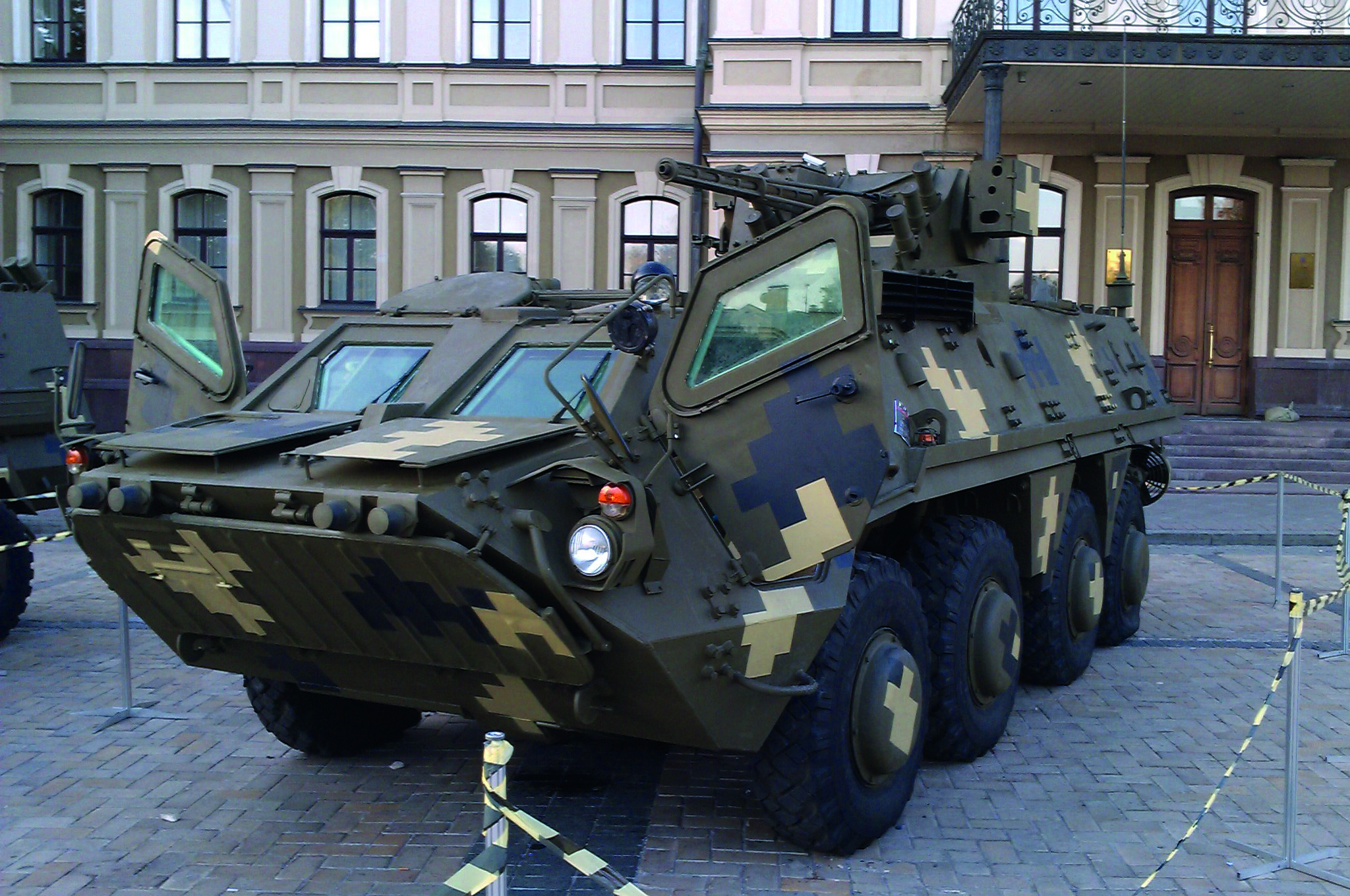

![VP from Kyiv: Deep strikes, energy infrastructure, and politics [Office of the President of Ukraine]](https://euro-sd.com/wp-content/uploads/2025/11/Trump-and-Zelenskyy_Office-of-the-President-of-Ukraine-Kopie-218x150.jpg)
